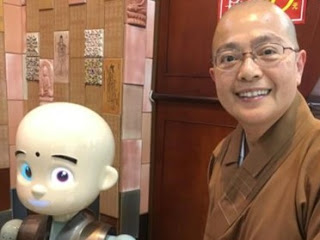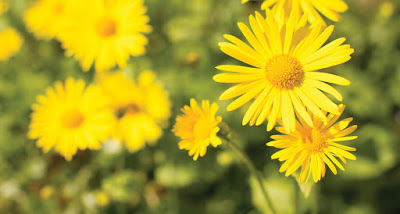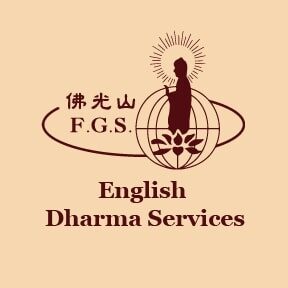
Speaker: Venerable Jue Ji
Director of Xiang Yun Temple, Austin, Texas, U.S.A
I. Introduction
When visitors get off the airplane at Honolulu International Airport, immediately the local people would joyfully greet them, “Aloha!”

“Aloha” has multi-meanings, which include “hello”, “welcome”, and “goodbye”. It sounds like “a-mi-ta-bha (Amitabha Buddha)” that Buddhists express their greeting and best wishes at the temple. We all enjoy the feeling of homecoming or warm welcome when visiting a place.
The American poet Robert Frost defines “home” as “the place where, when you have to go there, they have to take you in.” Wouldn’t it be wonderful to find our Dharma Home and be taken in upon our arrival? But spiritual travelers often experience the dichotomy of homecoming-and-home leaving dilemma. Can we rely on ourselves to reach the Dharma Home? Let me give you a short tour to this spiritual journey in finding the Dharma Home.

II. Dharma Home – A Perpetual Dream
We are spiritual wanderers, travelling all over the places in the world, life after life.

The Buddha tells us not to seek the Dharma from outside, it resides right inside us. Though being thus said, we spend most of our life in wandering “outside”: we learn worldly knowledge; we indulge ourselves in worldly affairs; we are frustrated by hardships; we make comebacks after numerous failures, etc. Dharma Home is really “the place where, when you have to go there, they have to take you in.” Dharma Home is a term that we dream of, however we cannot help but distancing ourselves from it all the more. There is a tug-of-war between our ordinary human nature and our embedded Buddha nature. The dichotomy exists from beginningless past and it may continue to the endless future. Seeking the Dharma Home becomes a perpetual dream of all travelers on their spiritual journey.
III. The Journey to the Dharma Home
It is our high expectation of Dharma Home that distances us from the appreciation and our joy of homecoming. We worship a lofty Dharma Home but dare not to live it in person. We choose to compromise ourselves to live in a semi-Dharma Home that we can afford to. But we can never be satisfied with a semi-Dharma Home because it cannot protect us from being side-tracked and retrogressing. Only the right Dharma can be the compass leading us to the real Dharma Home that is relaxing, comfortable, feeling at ease, and that is nirvana.
The 19th century English novelist Charles Dickens said, “Every traveler has a home of his own, and he learns to appreciate it the more from his wandering.” We Buddhist spiritual travelers also learn to appreciate the Dharma Home the more from cultivating our spiritual habits in the Saha World. For example, we take refuge in the Triple Gem, observe the Five Precepts, practice the Six Paramitas, learn the Law of Dependent Origination, perceive that the Five Aggregates are impermanent and nothing holds a substantial entity in the world. Nirvana, though lofty in concept, is approachable for spiritual seekers through the above spiritual habits, if they build up on the spiritual journey. The process of the spiritual journey, which is the spiritual habit buildup, is important before we arrive at the destination, nirvana.
Having realized the importance of the spiritual habit buildup, having built up the spiritual habit, and having been accompanied by Dharma teachers and good spiritual friends, we need to walk the Way by following an app of SELF-RELIANCE on-the-go.
IV. Self-reliance as the Essence of the Spiritual Journey
This app has been created since Sakyamuni Buddha’s time, recorded in his teaching, “rely on the self, rely on the Dharma, and rely on nothing else.”
You may rebate me by saying, “But we need a Dharma teacher to be our spiritual guide!”
Yes, you are right. However, inevitably and eventually you need to walk on the Way yourself. Your Dharma teacher can only show you the Way.
Here’s the example of taking refuge in the Triple Gem, which is the initial step one takes to formally become a Buddhist. We are “protected” under the shelter of the Triple Gem. For beginners, we take refuge in the Original Triple Gem, then we advance to the Abiding Triple Gem, and ultimately we take refuge in the Intrinsic Triple Gem.
We are more familiar with the Original Triple Gem than the Abiding Triple Gem and the Intrinsic Triple Gem. The Original Triple Gem refers to the Buddha, the Buddha’s teaching, and the Sangha community that practice the Buddha’s teaching.
As time passes by, in our present world, we also take refuge in the Abiding Triple Gem, which refers to the Buddha statues, the Buddhist canons, and the community of Buddhist monks and Buddhist nuns.
But we need to keep in mind that our final goal is to take refuge in the Intrinsic Triple Gem, which refers to the true nature, equivalent to Buddha nature. We are all buddhas-to-be! By taking refuge in the Triple Gem, we actually take refuge in ourselves. The Buddha assures us that the mind, the Buddha, and all sentient beings are all one and the same.
Is it too good to be true? We hardly ever find any other religion in the world that the founder of a religion would elevate or promote his followers to the same status as the founder. As we start the journey to enlightenment, we rely on our Dharma teachers and Dharma friends. But at the same time we need to keep in mind that we need to walk the way ourselves. And we need to cultivate our mind to “see” the interconnectedness of all beings in order to see the Dharma, which exists everywhere in our daily life.
As the saying goes, “Lush green bamboos are wondrous truths; the luxuriant yellow flower is nothing but prajna (wisdom).” All life and all the phenomena of life process are the Dharma. The lush green bamboo leaves are full of vitality, which is Dharma; the rotten bamboo leaves are also Dharma, because they are all integrated in the rhythm of life process. Similarly, the luxuriant yellow flower is Dharma, the withering flower is also Dharma. If we cannot see the integration of the bamboo leaves and our life or the yellow flower and our life, we lose the wonderful opportunity to find the Dharma and learn from the Dharma. The lush green bamboo leaves catch our eyes, touch our heart, dance in our mind, breeze into our ears….they live inside us so that we see it clearly and feel it deeply from the bottom of our heart. If we don’t see, we are “blind” to the Dharma. Unfortunately most of people nowadays are too busy to see the trees, the flowers, the hills, the river, the sky, etc. We are, in a way, very “blind” to the Dharma.

V. The Joyful Homecoming
Here is a dewdrop of Dharma for you. Let’s practice right action, right speech, and right mindfulness. This is what Venerable Master Hsing Yun has encouraged us to practice do good deeds, say good words, and think good thoughts. Imagine what will the Buddha do living our life today. When the Buddha works from home, he will work diligently to accomplish the work on time, not side tracked by playing video games or going cyber shopping. The Buddha would comfort the needy with kind words and encourage the weak with inspiring words, instead of quarreling with them in harmful words. The Buddha would purify his thoughts by following the guideline of right understanding, that we are all depending on one another to exist in this world, that we cannot isolate ourselves from the world, that we are all in oneness.
This is to say, if we play the Buddha’s role in our daily life, we surely will purify our behavior, speech, and thoughts. The Buddha would firmly dwells in us. Then we would have strong faith in ourselves because the Triple Gem now truly lives in us. Dharma is “home” now.
Home, home, sweet home! Aloha!


